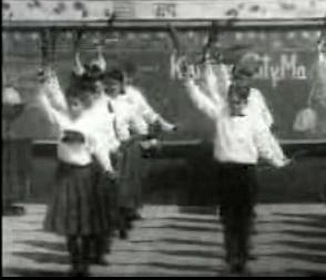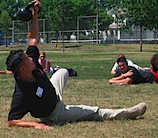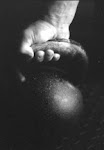 Some folks mistake strength for massive muscles, or take strength to be expressed as feats of strength, like tearing a phone book in half, or throwing a stone half way across a football field. But strength is our ability to contract our muscles to do work: to hold a pencil; to sit up; to roll over in bed. All of these movements represent the coordinated actions of muscles working together to support us moving against gravity in physical space.
Some folks mistake strength for massive muscles, or take strength to be expressed as feats of strength, like tearing a phone book in half, or throwing a stone half way across a football field. But strength is our ability to contract our muscles to do work: to hold a pencil; to sit up; to roll over in bed. All of these movements represent the coordinated actions of muscles working together to support us moving against gravity in physical space.
While part of building strength is about building new muscle, Interestingly, a significant component of strength is about enhancing recruitment of muscle fibers to support a particular action. Strength is as much about building muscle fiber as it is about training these fibers neurologically to work together better.
Some exercises are particularly good at developing this kind of muscular development and coordination for strength. These are the Turkish Get Up , the Front Squat, the Pull Up. Each of these can be done either with added weight or "naked" - as bodyweight- only exercises.
Each of these moves has particular patterns of strength and movement it will challenge
The Turkish Get Up (TGU) has apparently a history in the late 19th through early 20th century  strong"men" culture. From wherever it harkens, it is a seemingly unique move in that the practitioner moves from a completely prone position to a completely standing position, and then back down to prone. The movement is also done focusing on either side of the body, thus working balance and coordination as well as strength. Over the past few years, the TGU has become a staple particularly in the Kettlebell community (here's a version of Steve Cotter doing a lunge variant). The RKC community in particular has refined the TGU to an art of movement precision.
strong"men" culture. From wherever it harkens, it is a seemingly unique move in that the practitioner moves from a completely prone position to a completely standing position, and then back down to prone. The movement is also done focusing on either side of the body, thus working balance and coordination as well as strength. Over the past few years, the TGU has become a staple particularly in the Kettlebell community (here's a version of Steve Cotter doing a lunge variant). The RKC community in particular has refined the TGU to an art of movement precision.
One of the best things about the TGU is that each phase of it can be worked separately: one can make progress by working up from prone to elbow and down again, left side for a few reps; right side for a few reps, for instance, just to focus on upper body work, as Anthony Diluglio demonstrates (1) (2).
Overall, the movement works maintaining tension through the core muscles to maintain posture while moving through a suite of positions. For folks who like pilates and yoga, add a kettlebell to the TGU and it becomes, to borrow a Terry Pratchet Disc World phrase, yoga with Rocks In .
The Front Squat. There are many ways to do a squat: with a bar bell held overhead, with one held at the clavicles or on the shoulders, with dumb bells, with bodyweight only. There's even a single leg variant called a Pistol (that i love, here's a great tutorial, and that is featured in Pavel Tsatsouline's Naked Warrior).
The particular variant featured here is the front squat - either naked or with kettlebells.

The great thing about the front squat is that it works the whole body, in particular, the backside, the legs, the ab area. It's called the front squat because usually a weight is held in front of the athlete rather than on the shoulders (or lower). The back is kept straight, the body bends at the hips, and the person actively "pulls themselves down into the hole" as Pavel describes it, and then comes back up. Breathing, holding tension just right, is a key part of this move, as Will Williams demonstrates. Will demonstrates the move with two kettlebells, but one can be used as well, grasping the handle with both hands.
Now for those just starting this move, it can be done just by holding the arms in front of the body or above one's head, and then going down to the edge of a (stable) chair, just touching butt to chair and back up. Doing a few sets of five of these, a few times a day, is a great way to build up strength, stamina and coordination, and can be done pretty much anywhere.
The Pull Up. The pull up is a traditional upper body exercise. It works arms, forearms, grip, the upper back, and, in the back, especially the great big side muscles, the lats. The better we use our lats, often the less likely it is we'll hurt our shoulders. The pull up is interesting, too, because the full pull up has the body suspended in space - not something that's experienced that often, but that has its own special neuromuscular adaptations.
Some people think they could never do a complete bodyweight pull up. While it's a challenge, it's not impossible for most healthy folks. There are many many ways to get into doing pull ups, including starting with feet on the floor. You can check out more on the hows and whys over at begin to dig.
For folks who are repping out a lot of pull ups, the move can be reinvigorated by adding a weight to it. If a weight belt isn't handy, a kettlebell has a super handle for a foot - looks rather cool, too, to do a pull up with a KB hanging off one's foot.
Sum Up: Technique.
Strength isn't just for body builders or elite athletes. It's for all of us who want to be able to do daily tasks without injury or exhaustion, from youth to age.
To put together a strong exercise program whether beginner or advanced, you don't need a whole lot of moves or a whole lot of gear. These three moves can be practiced either in collective sessions, or repeatedly throughout the day in what Tsatsouline calls in Power to the People "greasing the groove."
Indeed, the main thing in any of these movements is technique. Why? Good technique enhances the most effective recruitment of muscle fibers. This recruitment in turn enables more weight to be moved, and thereby enables effective development of strength.
Caveat: Get your Form Checked. The above descriptions are not meant as "how to's" but as pointers to simple moves you can carry out as part of an excellent foundational strength program. It's always a good idea to talk with a qualified trainer to offer and review good technique. Check your trainer's credentials; interview 'em. Here's a few pointers on how to assess potential trainers. You may not need a trainer to set up a program for you, but a good eye to tweak form can help you make quantum leaps in your progress.







